Deck the halls
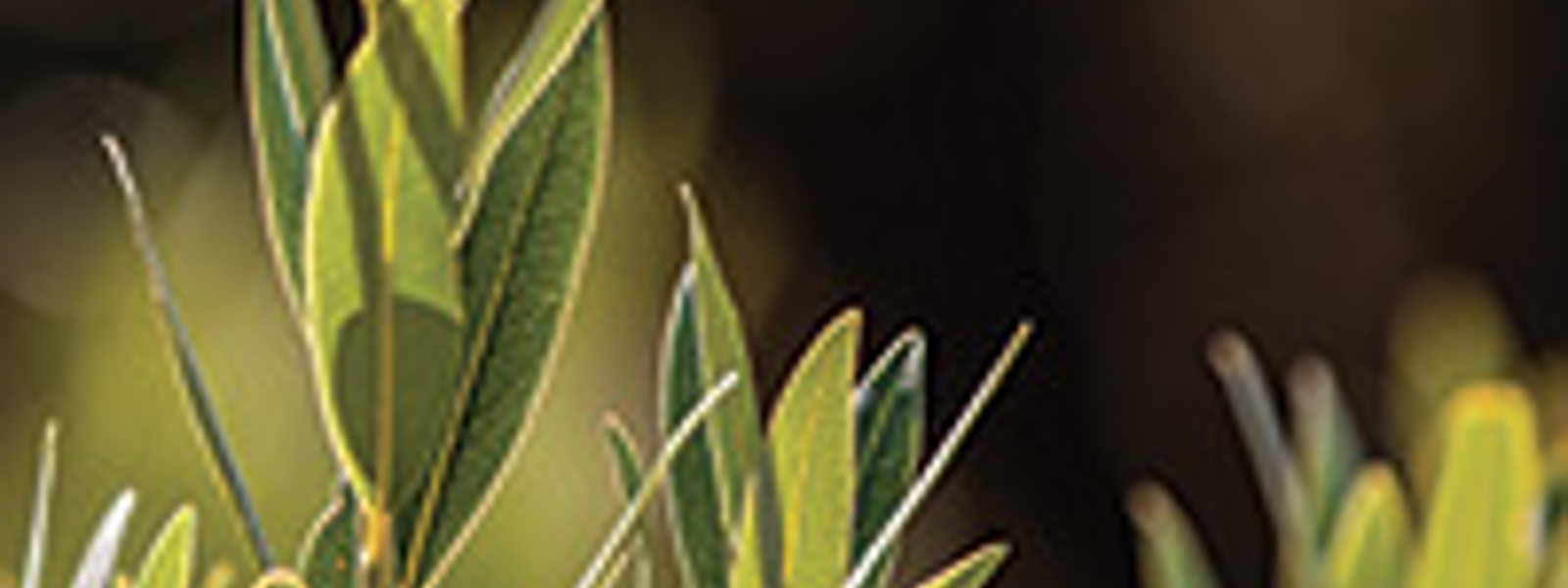
![]() More online: Recipe for The Cooperage Gin & Tonic
More online: Recipe for The Cooperage Gin & Tonic
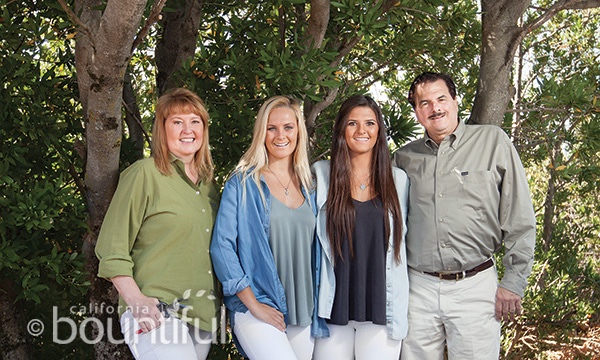
Tamara Attard, left, helped start Napa Mountain in 1978 and now owns and operates the worldwide spice company and its bay leaf ranch with her daughters, Margaux and Courtney, and husband Paul.
Bay is a common spice in most kitchens and adds flavor and fragrance to soups, stews, sauces and other dishes. But not all bay is created equal or limited to traditional uses—especially in California, where native bay trees produce outstandingly green, aromatic and flavorful leaves.
California bay grows wild along the coast, according to Tamara Attard of Napa Mountain, a specialty spice company that is the world's No. 1 supplier of California bay.
"It needs lots of cold air and likes mountainous terrain," she said of the Golden State's variety, Umbellularia californica Lauraceae, also called California laurel. "It doesn't grow anywhere else in the U.S. It doesn't like too hot or too cold."
Attard and her mother and brothers started the company in 1978 after finding the spice growing wild in their Bay Area backyard. While Attard's moniker as "The Bay Leaf Lady" has remained with her almost four decades as a wholesale provider in the international spice trade, the Napa Mountain brand has evolved to also provide fresh and dried products direct to customers, including restaurants and homes throughout the region.
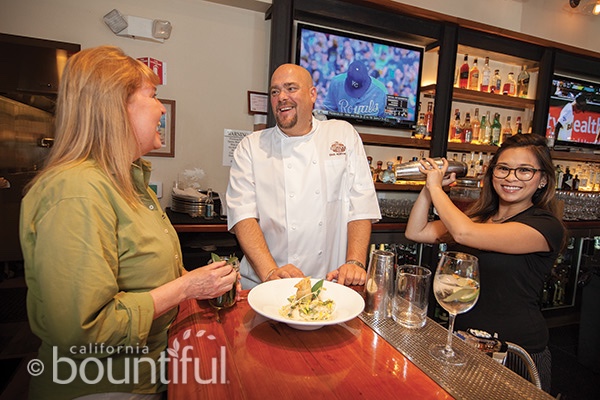
Chef-partner Erik Hopfinger of The Cooperage talks with Tamara Attard, left, about using California bay in his dishes, including this risotto, while bar manager Diana Petralia creates cocktails that feature the flavors and visual appeal of the locally grown leaves.
Local leaf
One of Napa Mountain's local culinary customers is The Cooperage American Grille in Lafayette, where local farm fare is highlighted on both food and cocktail menus.
"We are definitely known as having a farmers market at our bar top," said bar manager Diana Petralia, pointing to Mason jars that give customers a peek at locally grown ingredients. Among them is a supply of bright green California bay from Napa Mountain.
"It's a lot more fragrant and definitely more colorful. It's not brittle," said the restaurant's chef-partner Erik Hopfinger, describing California bay. "I always use a good amount of bay in my risotto and in my stocks, which is the base for most of my food."
Hopfinger buys his supply of the spice exclusively from The Bay Leaf Lady, who now runs production and operations at Napa Mountain and owns the company with her husband Paul, manager of sales and marketing.
The couple's daughters are involved as well: Margaux, 22, with degrees in bioengineering and marketing, works on technology aspects, including the website and an identification system that geotags precise harvest locations; Courtney, 19, helps with public relations and social media as she progresses toward a degree in agribusiness.
"I'm really excited to expand the business and develop the brand," Margaux said. "Courtney and I are looking forward to working together as a team."
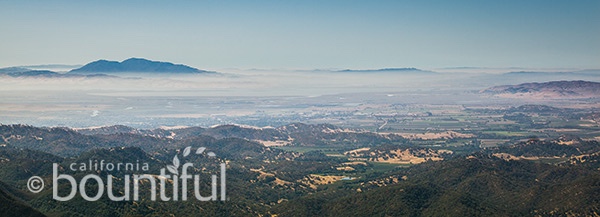
Some 100,000 California bay trees flourish on the family's 2,000-acre ranch, which offers panoramic views from the top of Mount Vaca.
Harvest in tough terrain
While family is cornerstone to Napa Mountain's continued success, there are several facets that have helped elevate the company to its present worldwide status.
It starts with a 2,000-acre ranch straddling the top of Mount Vaca, with Napa County on one side of the mountain and Solano on the other. The sweeping panorama offers views of the Sierra Nevada, Mount Diablo, Mount Tamalpais, Lake Curry and, on clear days, the Golden Gate Bridge and other San Francisco landmarks.
Roughly 50 miles of dirt trails traverse the hillsides at the ranch, granting access to ravines and steep terrain where some 100,000 California bay trees flourish. In those rough areas, a crew of about 10 people—four of whom are the Attard family members—handpick thousands of pounds of organic bay leaves based on annual demand forecasts from global spice companies and other customers.
It's a year-round process similar to pruning roses but on a larger scale, where branches with abundant green leaves are trimmed from the tree.
"Then in the following year, that limb that was cut will come back with fresh leaves again," Paul Attard said, "so you have a harvest cycle and you keep going on that cycle. One of the benefits of the bay leaf wild-harvest product is, it's not really seasonal."
The pruned branches are loaded into food-grade bins and transported by car down a twisting 5-mile road to Napa Mountain's 10,000-square-foot "clean room" in Vacaville. Workers don white coats, gloves and hairnets to process the leaves, which are triple-washed, sorted several times and bagged in 5-pound increments. Some are packaged fresh, while most are dried via a proprietary vacuum dehydration method that retains the integrity and flavor of each leaf.
This technology allows Napa Mountain to dry bay leaves in 20 minutes rather than 24 hours.
"This is the second generation of the technology," Tamara Attard said, adding that her family created the first generation back in 1981. Paul Attard, whose background includes software technology, integrated the capabilities into the current, scalable microwave-drying equipment and Napa Mountain holds exclusive rights to its use.
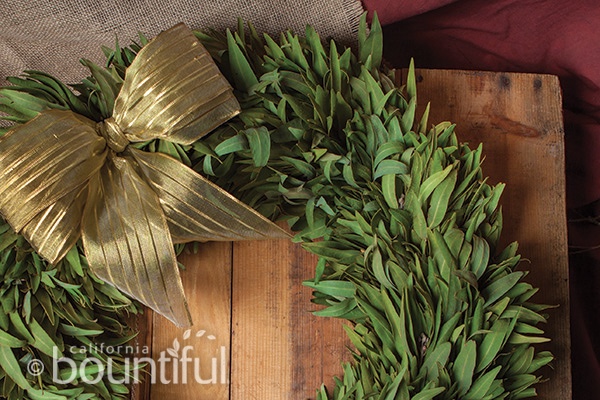
California bay is fragrant and colorful, and Napa Mountain offers wreaths made of fresh leaves that can be picked for year-round cooking.
Fresh and green
Napa Mountain produces an average of 20,000 pounds of organic California bay each year; it takes about 1,200 bay leaves to equal 1 pound. The annual volume is a smidgeon compared to the market's predominant sweet bay, Laurus nobilis Lauraceae, commonly called Turkish bay because as much as 90 percent of the commercial supply comes from Turkey, according to Courtney Attard.
A side-by-side look shows the Turkish leaves are brownish and wide compared to California bay leaves, which are long, slender and bright green.
"One of the reasons the Turkish bay is considered milder is that it is over a year old when it arrives, which is the same reason it is brown instead of our green," Courtney Attard explained.
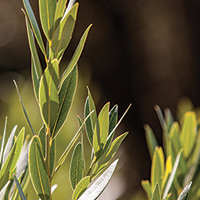
A close-up of a California bay tree growing at Napa Mountain's ranch near Vacaville.
Colorful California bay leaves also make gorgeous, fresh-smelling wreaths.
"We started making the wreaths back at the very beginning in 1978 as a holiday item and customers love them," Tamara Attard said. "People keep them in the kitchen because you can use them year-round to cook with."
Napa Mountain has continued the tradition, and team members craft the handmade wreaths in the clean room within 24 hours after the leaves have been picked. They are sold through Dean and Deluca and also through Napa Mountain's own website.
Bay leaf wreaths represented victory, wisdom and honor in ancient Greek and Roman times—and Paul and Tamara Attard say they relate to those attributes in watching their daughters become third-generation spice farmers.
"They were raised sending out 500 boxes of bay wreaths every holiday and the cooking with it and everything," Tamara Attard said. "I think my children really respect the quality and it's great to have them to carry on."
"It's heartwarming to me," Paul Attard added. "It's so nice to produce a sustainable, organic product with the opportunity for them to continue if they want to, and to have that heritage continue. They are the next Bay Leaf Ladies."
Joyce Mansfield

